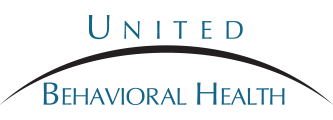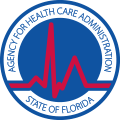Sometimes, Happiness Requires a Little Push
By Denise Etherton, M.A., LPC
North Tampa Behavioral Health Hospital
When you?think of push notifications, you probably?think of social media or?news stories that pop up on your phone, tablet, or computer.
Take a moment to look at?push notifications in your life. They pop up from work, home, school, family, finances,?health, and your own self. The way we view and interpret what is pushed to us has a lot to do with our happiness and general?life satisfaction. Paying attention to what and how we process that information can improve our mental health and make us feel happier.
Wikipedia defines happiness as, “The context of mental or emotional states, including positive or pleasant emotions ranging from contentment to intense joy. It is also used in the context of life satisfaction, subjective well-being, eudaimonia, flourishing and well-being.” I like to think of happiness as being able to experience life with a rainbow of emotions while having the freedom to move from one subject to the next without letting those emotions keep you from being your best self. These emotions then carry to different areas in our lives, which distract us from being in the moment. The following is an example of what this could look like.
Maya texts her husband, Anthony, about a distressing situation with a friend that left her feeling rejected and confused. Anthony texts her back, completely dismissing the previous text. She responds back, explaining that she is very upset. He sends back a text saying he can’t talk right now. Again, she’s feeling rejected and confused. Immediately the push notifications in Maya’s brain start flowing and can go in any number of directions. “What is that supposed to mean? Why would he respond like that? Does he think I’m stupid? Am I not important enough right now? Do I matter to him? Maybe I did something to upset him; what did I do?” Her mind gets all wrapped up in these scenarios, and her emotional hurt has been cranked up a few notches. As she works on the dishes, she is rehearsing different scenarios in her mind. Her daughter walks up behind her, wanting to proudly show her the picture she has drawn. She says, “Mommy!” Maya’s stress level is already high, causing her nervous system to be overly excitable. Maya is startled, whips around, and yells, “WHAT?” Little Sophia runs away crying, dropping her picture on the floor, feeling rejected and confused.
Maya wants to be her best self in marriage, parenting, work, and friendships. Her brain detects a perceived danger, and it starts trying to reason and problem-solve. No matter the scenario, she doesn’t feel any better, and her feelings of rejection and misunderstanding increase instead of decrease. What she doesn’t realize is that her brain is pushing messages of the worst-case scenario.
Worst-case scenario is a very common defense mechanism we’ve inherited from our ancestors. They always had to be in worst-case scenario mode due to the many physical dangers around them and the threats to their food, clothing, and shelter. Many times, people who have experienced trauma also stay in the worst-case scenario line of thinking, which keeps their nervous systems on high alert. When we stay on high alert much of the time, it wreaks havoc on our bodies. It can lead to brain chemistry and hormone imbalances, chronic pain, heart and blood pressure problems, and digestion concerns.
Here are some ways to remedy the worst-case scenario thinking mode, as well as ways to boost happiness.
Mindfulness. It’s a popular term. I like the words “notice” or “observe.” Take a moment to step outside of yourself. Imagine sitting across from yourself or being a fly on the wall. Not only can you see yourself physically, but you can also see what you are thinking and feeling. After a small amount of practice, you can start to notice yourself slipping into worst-case scenario mode. You don’t need to change anything or punish yourself for getting into that mode. These are mechanisms that were learned a long time ago and repeated over and over. It takes a lot of patience and practice to change course.
Hug it out. Physical touch is a great producer of a feel-good hormone called oxytocin. When we are truly engaged or in the moment with a hug, it takes about eight seconds for our body to release oxytocin. People often refer to oxytocin as the “love hormone.” It’s what strengthens the mother-infant bond or a newfound love.
Boundaries. Keep those emotions where they belong. It starts with observation. When Maya yelled at Sophia, she was not keeping her emotions where they belong. Her frustration was created by her thoughts about a different situation. It is very easy to let our emotions spill over into places they don’t belong. We may be frustrated with our boss, and it can spill out in the form of angry sarcasm toward our coworkers. This is a practice that always needs attention.
Unfollow the drama. Pay attention to the information you are processing each day. How much of this information is negative or fear-based? Think of the stories you see on the news, social media, commercials, music, or television drama. Pay attention to your emotions after engaging in these various activities. Give yourself a time limit of news coverage. You can take people out of your newsfeed on social media without unfriending them. Most social media outlets have online instructions on how to do this.
Your people. Examine the five closest relationships you have. Do you have a good mix of personalities, gifts, and talents? We are naturally drawn to people like ourselves. Push yourself to develop close relationships with those who have traits you would like to possess. This can leave you feeling vulnerable. Notice that feeling. You will grow and become a better you by improving the caliber of people you surround yourself with. Being close to people who gossip, worry, or are too needy can be draining (I call them energy vampires). Notice that feeling, and adjust your time and energy spent with them. This goes back into boundaries as well.
Medication. In my 20 years in the mental health community, there are a couple of words and phrases that make me cringe every time I hear them: “I don’t need a pill to make me happy” and “happy pills.” When I hear these, I know that that person hasn’t done all their homework. Antidepressants are not happy pills. There are certain situations that merit medication, and some do not. It depends on the individual and is certainly not a one-pill-fits-all scenario. I have seen medications that do not work, I have seen medications that make people worse, and I have seen medications that work beautifully. There is science behind medications and how they help neurotransmitters like serotonin and dopamine work in brains that are low producers. Taking medication for depression does not equal mental or character weakness. We would never tell a cancer patient they are weak for needing chemotherapy.
Do something nice for someone. When you do something nice for someone and your heart is in it, your brain produces more serotonin. This strengthens bonds and fosters compassion and empathy. Volunteer for a nonprofit, create a piece of art and donate it, bring someone lunch or coffee, or send a card to a loved one. Our hearts and theirs feel a little warmer. It also shifts the focus off negativity and onto something positive.
Hope. This last one is my very favorite. Hope is one of the most powerful emotions. When I hear someone say they are hopeless and helpless, I know that they are in a lot of trouble. This is why faith and spirituality are so important. If we try so many things to feel better and don’t, we feel hopeless. Our brains go into worst-case scenario mode, and we mentally limit our options. Our brains tell us we’re too tired to try again and fail. In failure, we find our strength to get up and try again.
The cognitive or thinking techniques in this article are based on acceptance and commitment therapy (ACT). There are some wonderful books and resources that teach you how to use this technique. My personal favorite is The Happiness Trap by Russ Harris. He also has free worksheets on his website.











